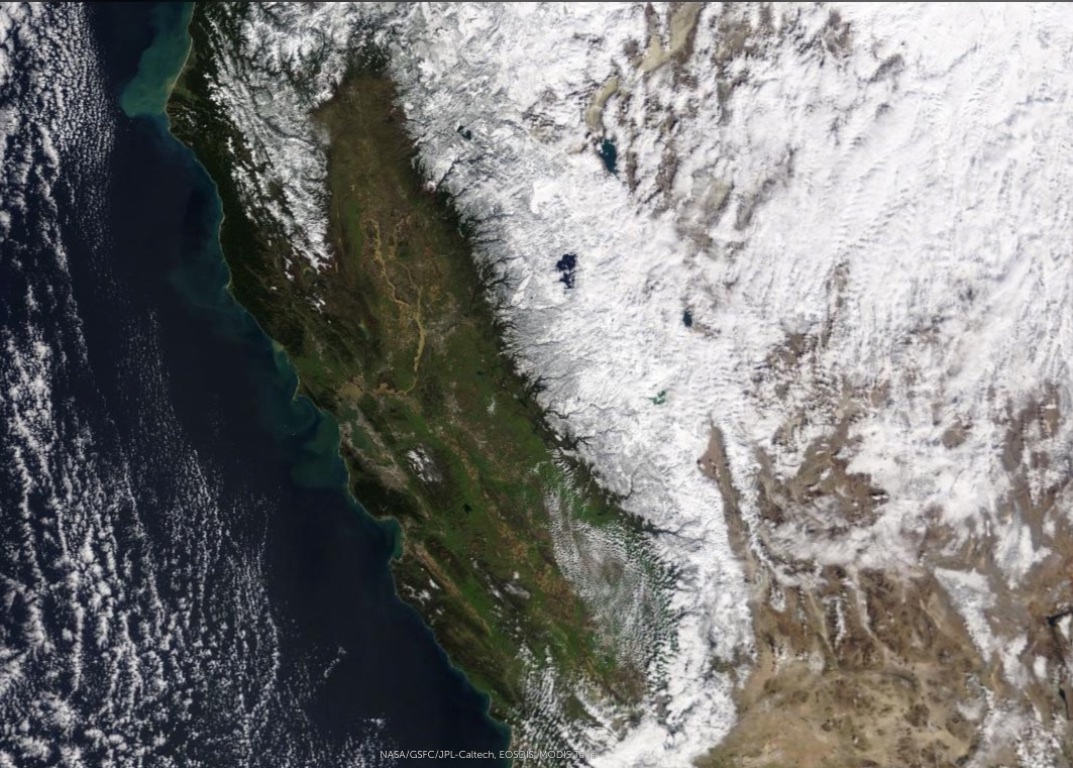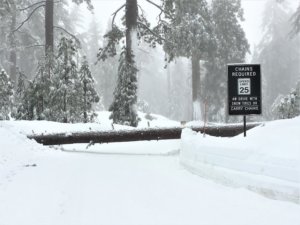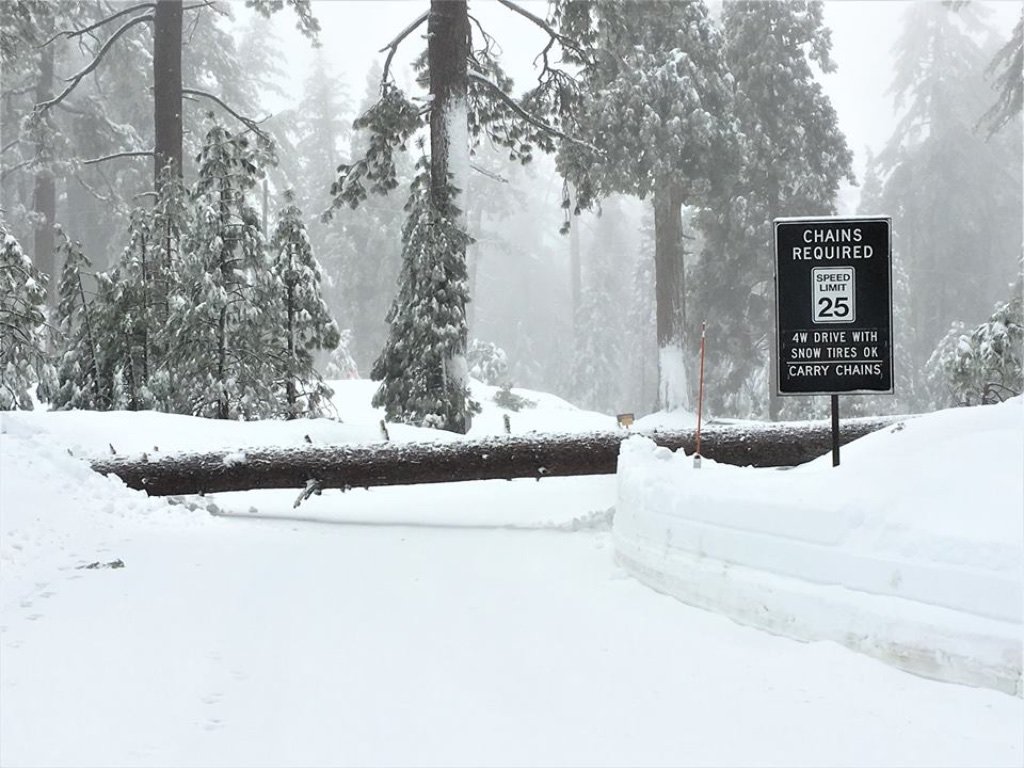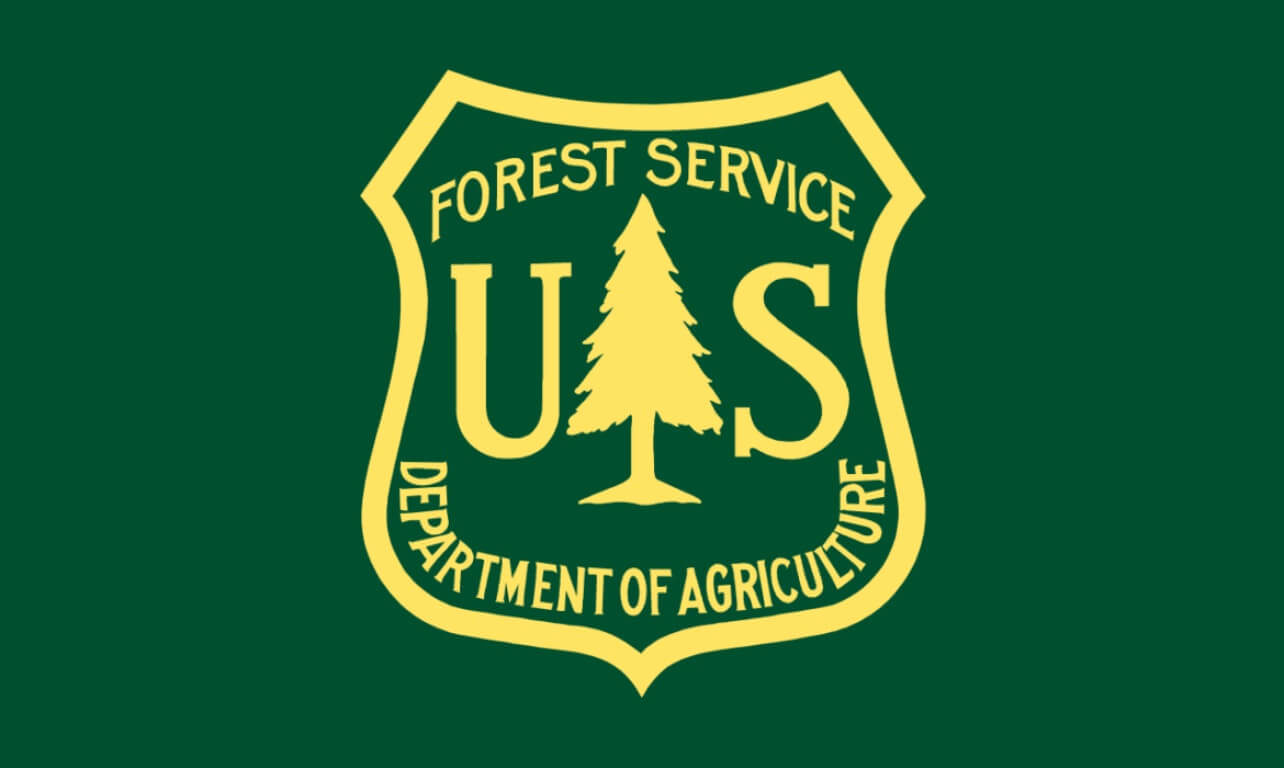Record Snowpack

“2019 has been a banner year for snow over the Sierra compared to last year. To date, the snowpack is nearly four times deeper now than it was one year ago.” – Hanford US National Weather Service

The blessing of snow and rain also wreaked havoc on the Sequoia region. Plagued by high winds, intense snow, and driving rain, the region was hit with power outages, and downed hazard trees. In addition to normal winter road closures, challenges like 20 fallen trees on the road and 7 feet of snow trapped guests and staff at Montecito Sequoia Lodge in Kings Canyon National Park in February. Iconic venues like the Giant Forest Museum and Kings Canyon Visitor Center had to close for short periods due to power outages and road closures.
Speaking about the snowstorms in February, Chief Ranger for Sequoia and Kings Canyon National Parks, Ned Kelleher said:
Travel into Sequoia and Kings Canyon under these conditions may make for very challenging and potentially dangerous travel. The most recent storm has left very little room to maneuver and nowhere to put new snow. The trees are snow and ice laden and the accumulating new snow will cause failures.
A February 2019 survey “recorded 113 inches of snow depth and a snow water equivalent (SWE) of 43.5 inches, which is more than double what was recorded last month at this location. Statewide, the Sierra Nevada snowpack is 153 percent of average for this date, thanks to several atmospheric rivers during February.” – Department of Water Resources (DWR)

As the snow begins to melt, the recent wet weather has created lovely wild flower blooms in the foothills, and flowing and streams. We look forward to the beautiful rushing Kings River in the canyon when it opens in Spring.
Poet and conservationist, John Muir noted the beauty of Sequoia tress in the winter and their impact upon local forest streams.
The roots of this immense tree cover the ground, forming a thick dense sponge that absorbs and holds back the rains and melting snows, yet allowing them to ooze and flow gently. Indeed, every fallen leaf and rootlet, as well as long clasping root and prostrate trunk, is a dam, hoarding the bounty of storm clouds, and dispensing it in blessings all through the summer, instead of allowing it to go headlong in short-lived floods. Evaporation is also checked by the densely foliaged sequoia to a greater extent than by any other mountain tree. Thick masses of air that are soon saturated are entangled among the massive crowns, or drift slowly like icebergs around clustering islets, while thirsty winds are prevented from sponging and licking along the ground. – John Muir: The New Sequoia Forests of California, 1878
Credit
Department of Water Resources (DWR)
https://water.ca.gov/News/News-Releases/2019/February/Latest-Snow-Survey-Finds-Water-Rich-Snowpack
Hanford US National Weather Service
https://www.cbsnews.com/news/montecito-sequoia-lodge-kings-canyon-national-park-120-rescued-after-being-snowbound-2019-02-08/
Photo Credit
NASA via Zoom Earth on Feb 17, 2019
Sequoia Kings Canyon National Parks Facebook Page @SequoiaKingsNPS
tags






